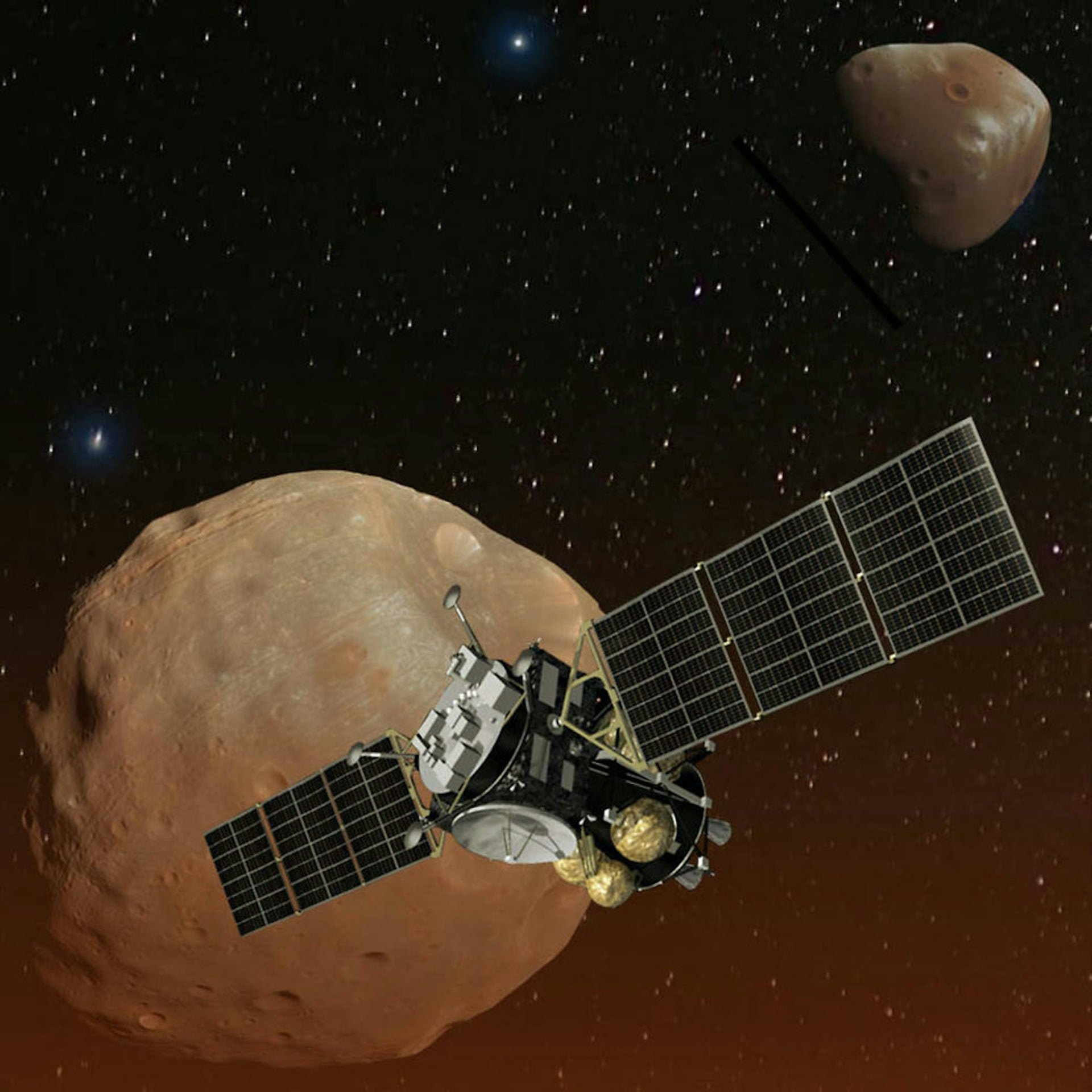
The two small moons of Mars, Phobos (about 22km in diameter) and Deimos (about 13km in diameter), have puzzled scientists for decades, with their origin remaining a matter of debate. Some have proposed that they may be made up of residual debris produced from a planet or large asteroid smashing into the surface of Mars (#TeamImpact).
An opposing hypothesis (#TeamCapture), however, suggests the moons are asteroids that were captured by Mars’s gravitational pull and were trapped in orbit.
To solve the mystery, we’ll need material from the moons’ surfaces for analytical analyses on Earth. Luckily, the Japan Aerospace Exploration Agency (JAXA) will launch a mission named “Martian Moon eXploration” (MMX) to Phobos and Deimos in September 2024. The mission will be carried by a newly designed rocket, the H-3, which is still under development.
The spacecraft is expected to reach Martian orbit in 2025, after which it will orbit Phobos and finally collect material from its surface before returning to Earth by 2029.
This will make it the next in a series of recent missions bringing material from space back to Earth, following on from Jaxa’s successful mission to asteroid Ryugu (Hayabusa2), as well as NASA’s Osiris-Rex mission to asteroid Bennu and the Chinese Space Agency’s Chang’e 5 mission to the Moon.
Giveaways
If an impact origin did indeed occur, we would expect to find material on Phobos similar to that which is found on Mars. While we do not have any material returned directly from Mars (yet), we are lucky enough to have a rock that has been ejected off its surface, which eventually found its way to Earth.
These meteorites may, therefore, be similar to the material returned from Phobos, providing a fantastic comparison.
In the case of a captured asteroid origin, however, we are more likely to find material on Phobos that is found on other asteroids in our Solar System. The prevailing hypothesis in the #TeamCapture group is that the moons are made up of the same rock as meteorites, called carbonaceous chondrite. Thankfully, we have plenty of such meteorites and samples that we could compare with the Phobos material.
Comparing meteorites and material brought back from Phobos will be a fantastic tool for helping us understand the origin of the two moons. Once we have the material in the laboratory, rigorous analytical techniques can be applied to the samples.
One such technique is oxygen isotope analysis. Isotopes are versions of elements whose nuclei have more or fewer particles called neutrons. Oxygen, for example, has three stable isotopes, with atomic masses of 16, 17 and 18.
The sum of the isotopic ratios of oxygen-17/oxygen-16 and oxygen-18/oxygen-16 is denoted as Δ17O and is characteristic of specific parent objects. Depending on where in the Solar System a rocky body is formed, a distinct oxygen composition is acquired and retained in the rocks. For example, rocks from Earth have Δ17O of around 0, while meteorites from Mars have Δ17O of around ~0.3. Therefore, rocks from Earth and Martian meteorites can be readily separated from one another.
If Phobos formed in the same or at least similar location in the Solar System to Mars, we would expect the composition of the material brought back by MMX also to have Δ17O of around 0.3.
As mentioned previously, #TeamCapture suggests a carbonaceous chondrite-like origin for Phobos. All known carbonaceous chondrites studied by scientists have revealed negative isotopic Δ17O, ranging from -0.5 all the way down to -4. Oxygen can, therefore, be an extremely powerful tool in deciphering the origin of the moons of Mars and should be a high priority for the mission once the material is returned to Earth.
If Phobos does indeed represent an ancient fragment of Mars, it could comprise the most primitive of Martian material. Mars has experienced a wide range of processes that have altered the rocks on its surface, including wind erosion and water alteration. Based on features such as dry river beds observed from orbiters such as Viking, it is clear that water on Mars once existed.
This water likely originated from a mix of asteroids and comets and volcanic activity. Mars also retained a thick atmosphere, which allowed water to be present as a liquid on the planet’s surface.
Phobos, on the other hand, has remained an airless body where processes such as contamination from water have not occurred (though minor impact events may have taken place). This means that samples returned from Phobos could provide extremely important insights into the original water content of Mars and a window into processes that occurred in the early Solar System.
MMX is one of the most exciting planned missions in space exploration. With less than a year to go, our fingers are already firmly crossed for a successful launch, sample acquisition, and sample return. Many scientists, including myself, would absolutely love the possibility of one day studying those samples.
This article was originally published on The Conversation by Ben Rider-Stokes at The Open University. Read the original article here.







